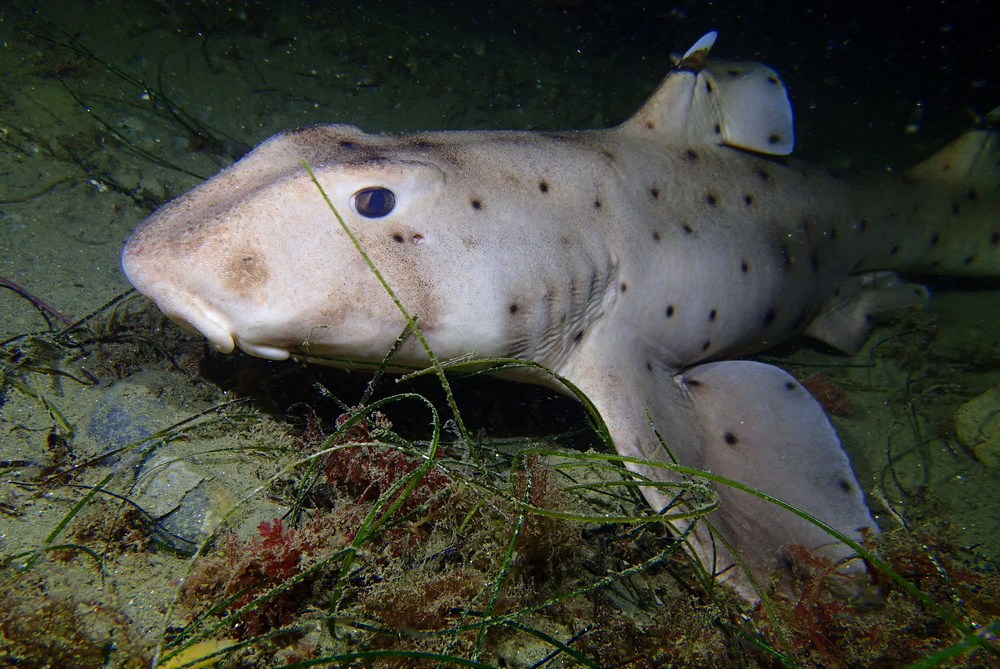Horn Sharks at La Jolla Shores
These small sharks have wide heads and blunt snouts, with ridges over their eyes. They’re usually a dark grey to light brown, with dark brown or black spots all over their bodies and lobed fins. Slow moving and nocturnal, they scavenge closer to the shore at night, and return to their familiar resting place during the day. They are considered little threat to humans because of their size and teeth structure, but both of their dorsal fins have sturdy spines, and should be handled with care.
Horn sharks are members of an order of fish known as bullhead sharks (Heterodontiformes). There are nine known species in this order, all belonging to the genus Heterodontus. The term “horn shark” is applied to three of the species—the California horn shark, the Mexican horn shark, and the crested horn shark.
The shark’s teeth are adapted for grasping and grinding hard foods gathered from the seabed, such as sea urchins and crabs. The front teeth are pointed to enable efficient biting and the back teeth are flattened for crushing,
Bullhead sharks generally aren’t dangerous to humans, although they may bite or chase when threatened. They shouldn’t be confused with bull sharks, which are aggressive.
The California Horn Shark
The California horn shark (Heterodontus francisci) lives on the west coast of North America from the state of California to the Gulf of California. It’s an attractive fish with a brown or grey surface that has darker spots. It reaches a maximum length of four feet. Most individuals are shorter than this, however.
The fish is usually a nocturnal animal. During the day it hides in caves or crevices, under ledges, or in thick beds of seaweed. Starting at dusk, it hunts for animals on or close to the seabed, including crabs, snails, squid, shrimp, sea urchins, sea stars (starfish), and occasionally fish.
The shark is able to remove animals attached to a substrate by using its teeth like a chisel. Suction helps draw the prey into the shark’s mouth. The shark may also pry animals off a surface with its mouth by bracing itself with its pectoral fins, moving into a vertical position and then rapidly moving its body downwards, in effect using its body as a lever.
Reproduction
Fertilization is internal in all sharks. Fish have a pelvic fin on each side of their body behind the pectoral fins. A male shark has a tubular organ called a clasper on the inner side of each of his pelvic fins. Claspers insert sperm into the female’s reproductive tract.
After fertilization, the female horn shark reproduces by laying eggs. She produces two eggs at a time, starting in the late winter or early spring. There is a gap of eleven to fourteen days between egg laying sessions. Eggs are produced for as long as four months.
The horn shark egg case has a spiral shape. It’s soft when it’s laid and gradually hardens over time. The female wedges each egg into a rock crevice to protect it from predators. The embryo takes a long time to develop. Pups aren’t born until six to eight months after the eggs are laid. The typical lifespan of California horn sharks isn’t known for certain, but they have lived for twelve years in captivity. Some reports say that they can live for as long as twenty-five years.
We see horn sharks often during the night dives at La Jolla Shores.
To observe these amazing creatures at their natural habitat call (858) 397-8213 to reserve or book online


